|
|
 |
|
 |
|
|

|

|

|
|
Prior Page
|
Next Page
|
Top Index
|
|
|
 |
|
 |
|
Fully Automatic Koji-making machine. Zip! Bang! Bop! The rice moves through several levels within this box, each having a different, controlled temperature and humity level.

Top view of the same modern wonder of a machine.
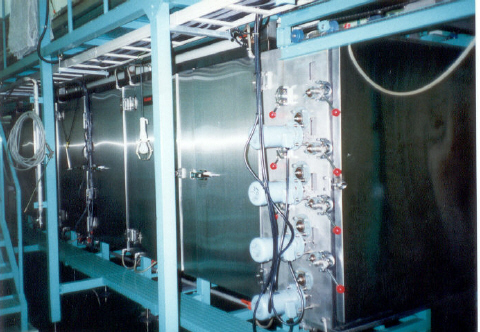
Side view, with all the funky adorning controls and gadgets.

A wider side view of the fully automatic machine.

A round, rotating koji-making machine, smaller scale than above, but still popular. The brand name is Hakuyo, for those that must know.
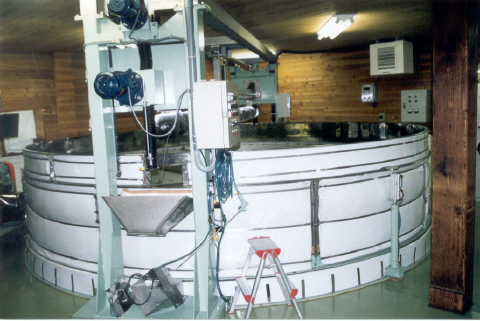
Another (closer) view of the round Hakuyo machine. The inside rotates, keeping the koji-in-making stable in temperature and humidity, as well as preventing it from clumping.
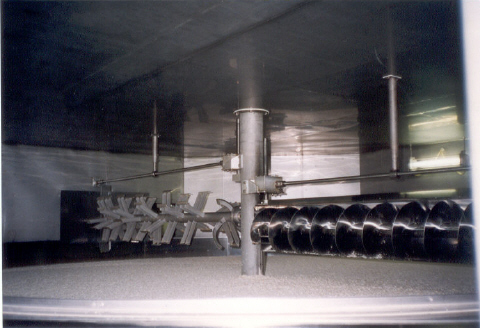
Inside that bad boy (the round machine shown above). The blades here rotate slowly to keep the koji-in-making loose, even in thickness (for temperature distribution) and even in moisture.
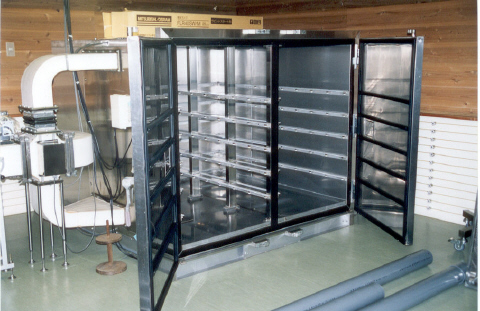
A much simpler machine that only controls air temperature, circulating it \with the fan on the left, without moving or touching the koji itself.

Even simpler versions, nothing more than insulated, temperature controlled boxes, with the air circulated using a pump similar to the above (albeit it not visible in this photo).

Even simpler versions, nothing more than insulated, temperature controlled boxes, with the air circulated using a pump similar to the above (albeit it not visible in this photo).
Note the round automatic "Hakuyo" machine in the background. Both are used at this kura.
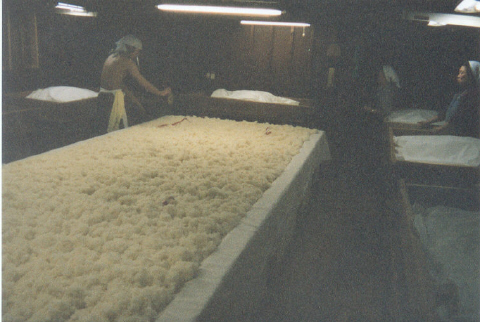
Manual koji production. Here, the koji-maker sprinkles the spores onto freshly steamed rice through the pores of a silk bag.
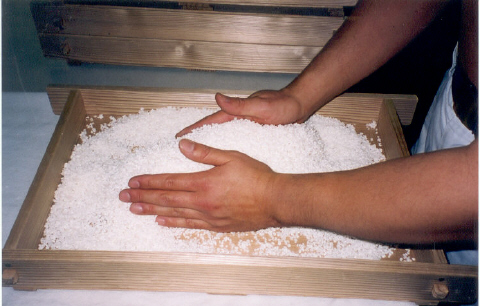
Manual koji production. The koji-maker here is mixing a small tray of koji to keep temperature and moisture constant. Almost all super-premium sake is made in this labor intensive manner.

Pasteurization Coil
This type of coil is submerged in hot water (about 60C) and sake is passed through it as a means of pasteurization.
|
|
|
|